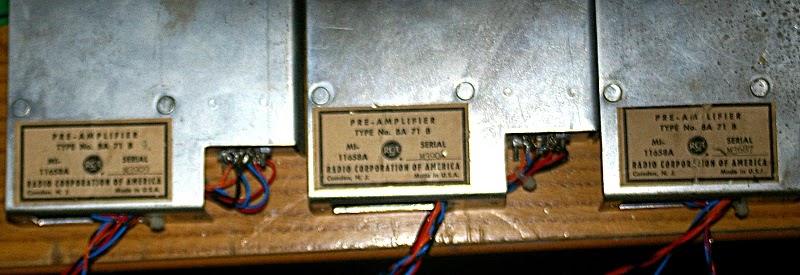 Yorkville Sound TL352 PA Cabinet.
Yorkville Sound TL352 PA Cabinet.
I have been working with PAs off and on for decades,
starting way back in the 80s with Cerwin Vega bins, and JBL horns.
I have always kept an eye on Yorkville Sound's products,
as they are a local manufacturer here in Toronto, and are
famous for their
Trainor Guitar amps, used by rock players
for years, and now coveted tube gear.
They have now been in the PA supplying business for quite a while,
and have been a staple supplier of PA gear through
Long & McQuade Music Stores across Canada.
This meant their gear had to survive the inevitable torture
and abuse of both touring and rentals. As a result,
Yorkville Sound have taken that experience to heart,
and produced some of the most rugged and durable,
and even near-bulletproof PA gear around.
I finally purchased a couple of PA cabinets from their
"Pulse Series" line, which is a medium cost build.
The first thing I did was pull the horn to see what kind of
thing was going on. I was astounded; inside as advertised
was a
Celestion 100 watt compression driver, but most
importantly, was the way they had the driver bolted into
a 1" thick plywood framework to make it immovable and
immune to the cabinet dropping 10 feet.
(most cheaper cabinets have drivers screwed onto horns
which support the weight of the driver, up to 7 llbs.
When a cabinet like that is dropped, the driver can be sheared
off of the horn, or the
ABS plastic horn can be simply snapped off.)
Next, I pulled the woofer, and was very impressed with this
massive custom
Eminence Driver rated at 400 watts, with giant
black enameled steel plates and cooling vent.
The biggest surprise was the huge heavy-duty crossover,
which actually stunned me. I have never seen a bigger,
heavier, tougher-made crossover than the monster bolted
into the bottom of this cabinet.
Even with 40 years on an electronic tech bench,
I have never even seen the gigantic (50-100watt?) resistors
they used here. (Of course I've seen power resistors,
in Hydro gear, but not in audio equipment before.)
The coils were similarly massive, and plainly made
very credible their claim of a 400 watt power handling capability.
If you ever rent one of these cabinets, take a peek inside;
I think your jaw will drop when you compare this tank
to average PA cabinets.
I know they have had a longstanding policy of building tough,
but this cabinet surpised me even though I was prepared
to see a good build.
As to the sound:
They have chosen a design in this series with
crossover points
between 2000 Hz and 2100 Hz. This results in a very smooth
upper mid between say 2000 and 6000 Hz.
Other manufacturers crossover much higher, to protect
cheaper horn drivers from overload and burnouts, but
making the 15" woofer try to cover between 3000 and 5000 Hz
usually results in wonky uneven frequency response, as
the inductance of the speaker kicks in and the piston surface
begins to "break up" (flex and develop standing waves).
By crossing so low, they let the horn handle this critical range.
The horn is then protected from overload by various circuits
such as the 'lamp bypass' and varistors etc.
This PA bin is similarly protected with an automatically resetting
circuit incase of feedback or overload.
In a previous set of different cabinets, I replaced the crossover
with a 4th order LR at 3.5 kHz, and got a very acceptable sound. I had
chosen the higher frequency to protect the horn compression driver also.
I don't think the Yorkville Sound PA box has such a high order crossover, but they have approached the problem differently,
with a lower frequency and protection circuits.
The result is a very smooth sound in which the woofer is
relieved of having to provide higher frequency coverage.
The birch plywood box is built like a tank, and I expect that
this unit can take a lot of abuse, and is the type that you'd
rather maintain or repair than replace.
Hats off to whoever is in charge of their quality control and
design specs, as they have produced something like the highest quality
product one could hope for, with top notch components and drivers, and a
supremely heavy-duty build.
What are the drawbacks?
Only one I can see:
These cabinets are heavy,
and although not that large, two will fill the backseat of a car.
You will need a pickup to move an entire PA built around these cabinets. And they are alot easier to lift with two people.
I would have liked to have seen metal handles,
but the recessed ABS-style handles seem well-made.
The cabinet is covered with a tough plastic/fibreglass type coating that
seems very scuff resistant (unlike rugs and paint), and looks like it
will hold up visually over time.
I thought I was going to swap out the crossover,
but once I saw the monster that was in there, I decided
to leave it as is.
Very pleased with this purchase, so far, and
I have to say picking up a used pair at Long & McQuade
was the bargain of the century.
Not only a great product, but L&M gave me a warrantee as well!!!
I'm going to road these locally and I consider this
one of the most robust components of my rigs.
Summary:
Sound - Great.
Build - Awesome.
Drivers - Top Quality.
Crossover -
powerhouse.
Box - a tank.
Handles - (minor worry: wish they were metal)
Finish - durable.
Grill - metal curved grill, non-existant rattle issues.
Connectors - Speakon / Phone.
My score:
95% of my wishlist met.




























